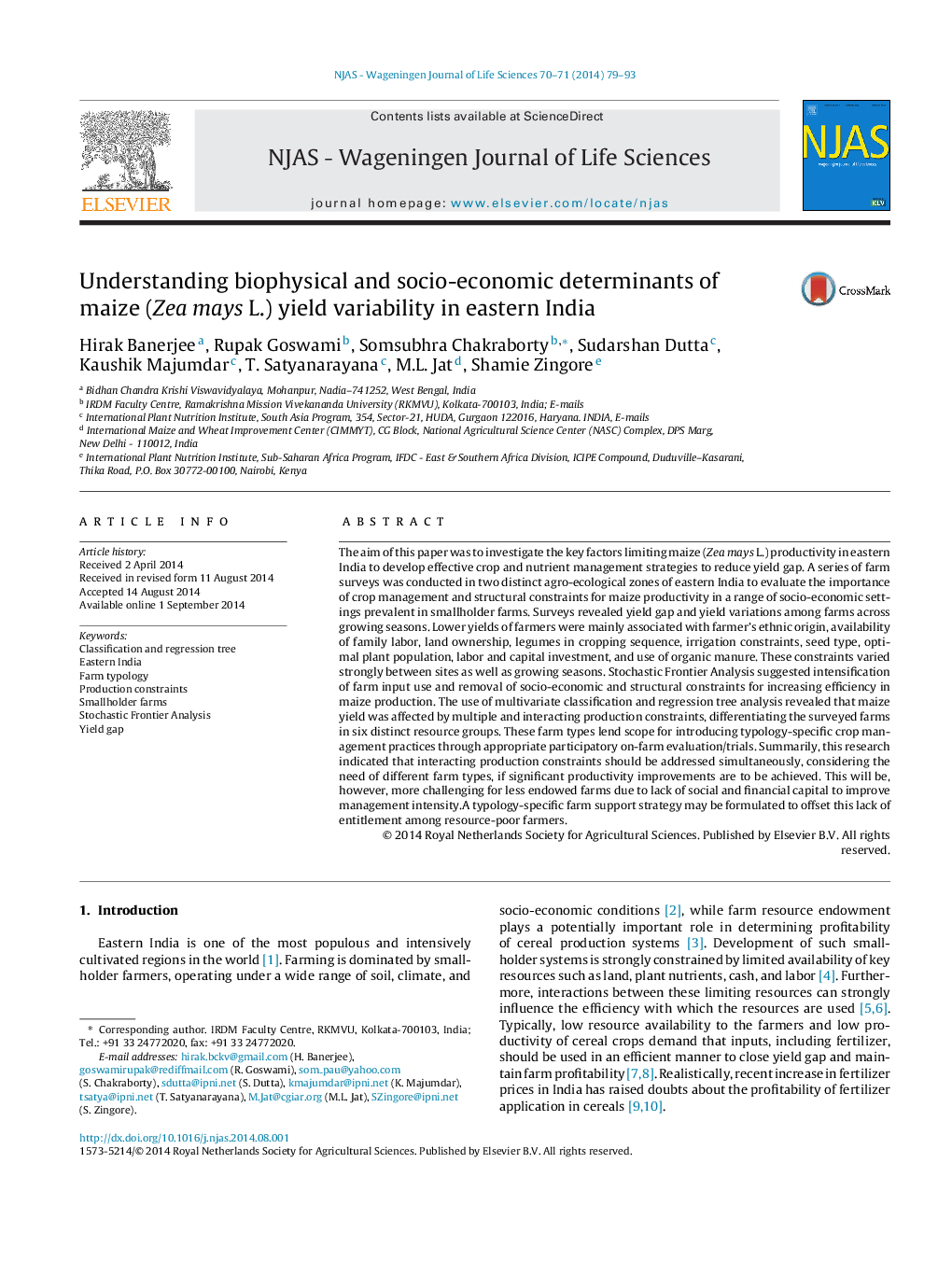| کد مقاله | کد نشریه | سال انتشار | مقاله انگلیسی | نسخه تمام متن |
|---|---|---|---|---|
| 4501251 | 1624064 | 2014 | 15 صفحه PDF | دانلود رایگان |

• We identified a host of yield-limiting factors for Maize yield in eastern India.
• SFA suggested interventions for increasing efficiency in maize production.
• We used CART for identification of yield determining factors.
• CART also helped identifying six distinct resource groups among maize growers.
• This would help in site-specific crop management for Maize in eastern India.
The aim of this paper was to investigate the key factors limiting maize (Zea mays L.) productivity in eastern India to develop effective crop and nutrient management strategies to reduce yield gap. A series of farm surveys was conducted in two distinct agro-ecological zones of eastern India to evaluate the importance of crop management and structural constraints for maize productivity in a range of socio-economic settings prevalent in smallholder farms. Surveys revealed yield gap and yield variations among farms across growing seasons. Lower yields of farmers were mainly associated with farmer's ethnic origin, availability of family labor, land ownership, legumes in cropping sequence, irrigation constraints, seed type, optimal plant population, labor and capital investment, and use of organic manure. These constraints varied strongly between sites as well as growing seasons. Stochastic Frontier Analysis suggested intensification of farm input use and removal of socio-economic and structural constraints for increasing efficiency in maize production. The use of multivariate classification and regression tree analysis revealed that maize yield was affected by multiple and interacting production constraints, differentiating the surveyed farms in six distinct resource groups. These farm types lend scope for introducing typology-specific crop management practices through appropriate participatory on-farm evaluation/trials. Summarily, this research indicated that interacting production constraints should be addressed simultaneously, considering the need of different farm types, if significant productivity improvements are to be achieved. This will be, however, more challenging for less endowed farms due to lack of social and financial capital to improve management intensity.A typology-specific farm support strategy may be formulated to offset this lack of entitlement among resource-poor farmers.
Journal: NJAS - Wageningen Journal of Life Sciences - Volumes 70–71, 6 December 2014, Pages 79–93